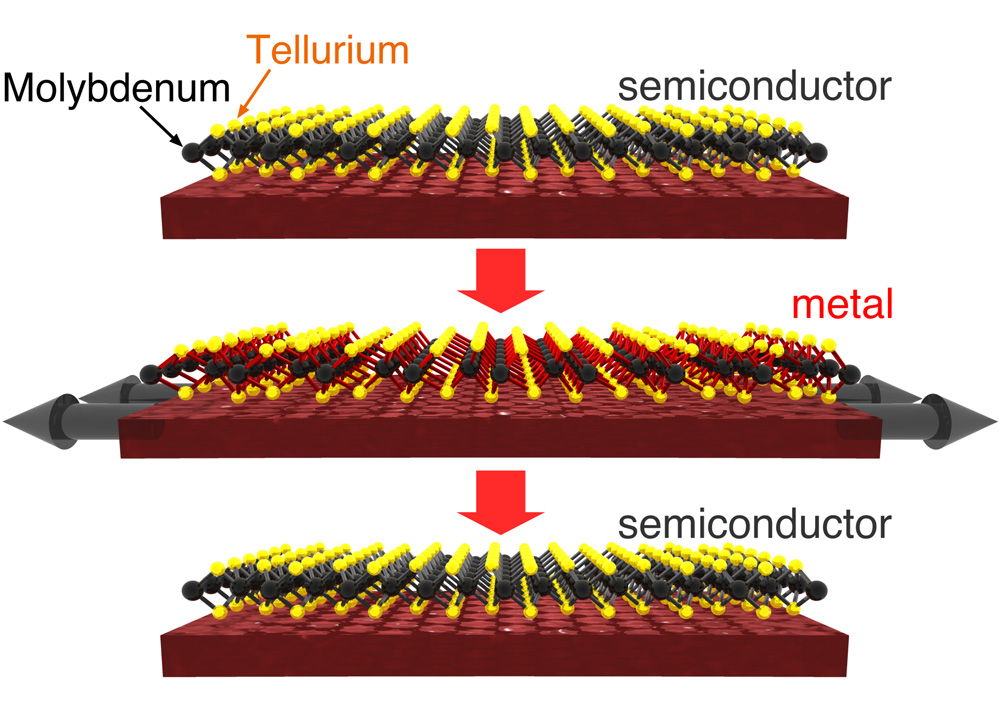An electronic switch just three atoms thick
July 2, 2014

In the top panel, this three-atom thick crystal is shown as semiconductor that is non-conductive. An outward tug on the material (shown in the middle panel) clicks the crystal into a metallic, or conductive state. The third panel shows the crystal back in a non-conductive state. (Credit, Karel-Alexander Duerloo)
Three Stanford researchers have discovered a flexible, switchable material that can form a paper-like sheet just three atoms thick and behave like a switch.
As noted in articles on KurzweilAI, there’s a lot of interest in developing electronic devices based on such materials, which could enable a cell phone to be woven into a shirt, for example.
The new Stanford material can be mechanically pulled and pushed, back and forth, between two different atomic structures — one that conducts electricity well, the other that does not.
So far this discovery only exists as a simulation. But Evan Reed, Assistant Professor of Materials Science and Engineering, team leader, and co-author of an article on the research in Nature Communications, hopes this work will inspire experimental scientists to fabricate this super-thin crystal and use it to create electronic and other devices that would be as light and flexible as fibers.
Theoretically, such electronic materials also have potential to reduce battery-draining power consumption in existing devices such as smart phones.
According to the researchers, this switchable material is formed when one atomic layer of molybdenum atoms is sandwiched between two atomic layers of tellurium atoms.
The simulation relied on the fact that molybdenum and tellurium form a sheet-like crystal lattice that is just three atoms thick. This atomic sandwich can form different crystalline structures that have useful properties: in one structure this lattice easily conducts electricity; in the other configuration it does not.
This animation by Karel-Alexander Duerloo shows a three-atom-thick crystal being pulled from a non-conductive to conductive state, then being pushed back to the non-conductive state.
Abstract of Nature Communications paper
Mo- and W-dichalcogenide compounds have a two-dimensional monolayer form that differs from graphene in an important respect: it can potentially have more than one crystal structure. Some of these monolayers exhibit tantalizing hints of a poorly understood structural metal-to-insulator transition with the possibility of long metastable lifetimes. If controllable, such a transition could bring an exciting new application space to monolayer materials beyond graphene. Here we discover that mechanical deformations provide a route to switching thermodynamic stability between a semiconducting and a metallic crystal structure in these monolayer materials. Based on state-of-the-art density functional and hybrid Hartree-Fock/density functional calculations including vibrational energy corrections, we discover that MoTe2 is an excellent candidate phase change material. We identify a range from 0.3 to 3% for the tensile strains required to transform MoTe2 under uniaxial conditions at room temperature. The potential for mechanical phase transitions is predicted for all six studied compounds.
